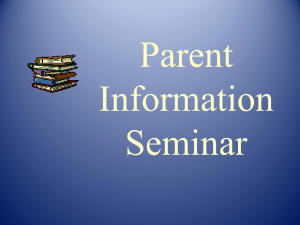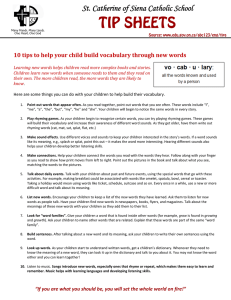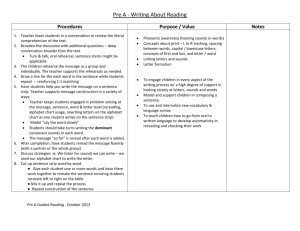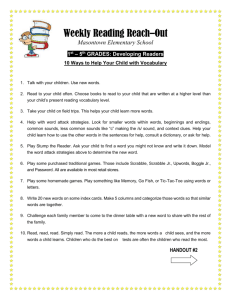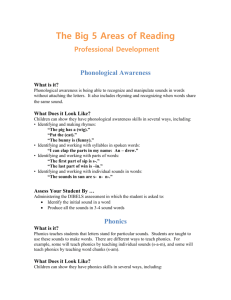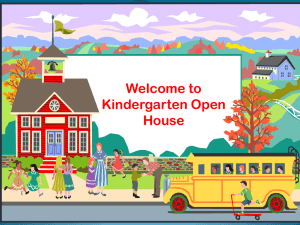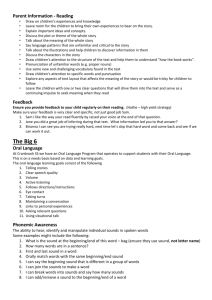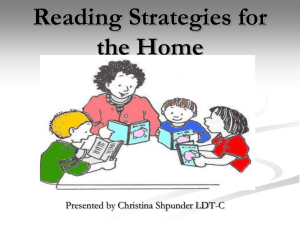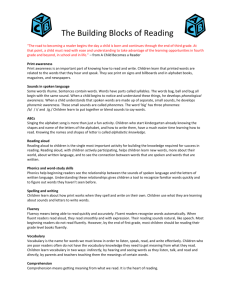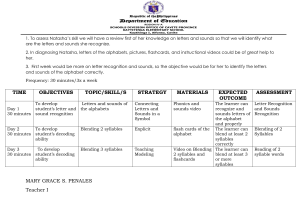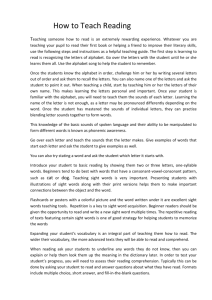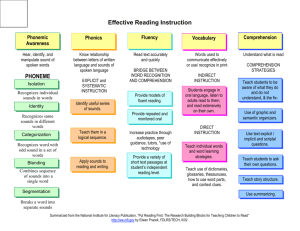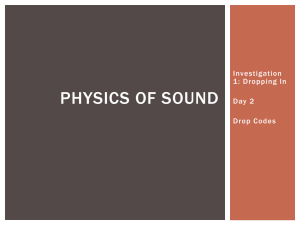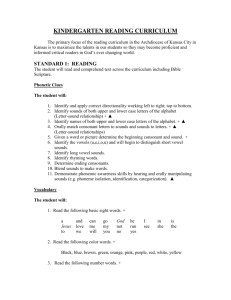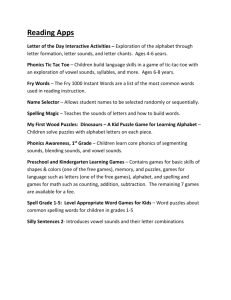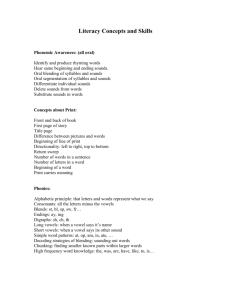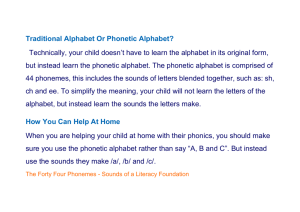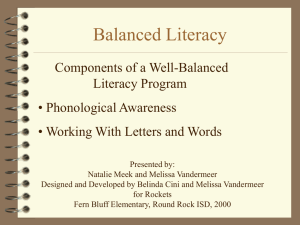Assessing the Emergent Reader and Writer
advertisement
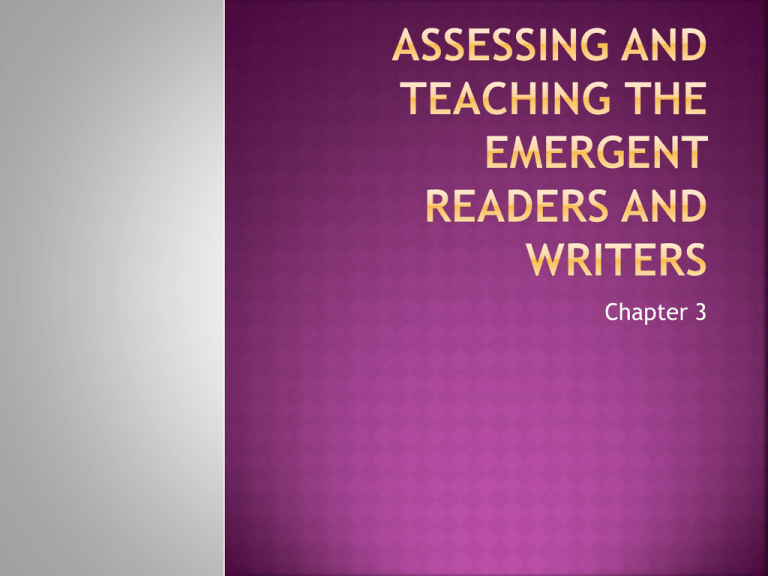
Chapter 3 The pre-reading skills that are the building blocks of future reading success: Concepts of print: Phonemic Awareness-letters represent sounds The alphabet debate Awareness of what people are doing when they read and write. Mostly from modeling. Assessed with letter sound fluency measures (DIBELS) Book sense, book handling skills Phonological awareness – sounds make words Assessed with phoneme segmentation (DIBELS) Oral Language Print to speech to comprehsnion (understanding) Understanding events (a story) that are not happening in the here and now “live” Vocabulary including vocabulary size Comprehension Understanding text (even when read aloud), connecting it to schema Book handling skills Knowledge of reading words. Directionality of text Academic vocabulary Beginning and end Top and bottom Word and letter Upper vs. lower case letters and punctuation Creating your own assessment vs. commercial assessments. Assessing Letters Sounds Automaticity / fluency The the alphabet concept of a word Pointing and one-to-one correspondence Phonological Awareness Syllables Onset and rhyme Phonemes Matching rhyming words “Tell me all the sounds you hear in ball” Vocabulary (p. 63) Comprehension (p. 66) Modeling Big books Teaching sounds and letters P. 75 Teaching the alphabet Books, matching games Teaching for print orientation the concept of a word Read aloud Sentence building Language experience stories Multisensory Tapping and sweeping Clapping syllables Rhyming games Poetry Reading, shared reading and rereading (p. 80) Modeling: decoding, expression, one to one correspondence, metacognitive skills Guided Reading Vocabulary High frequency words Tier two words Language Story telling Discussion stories Listening activities
